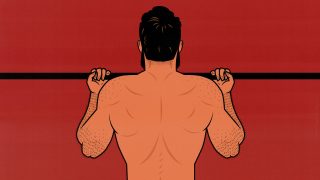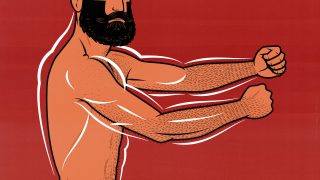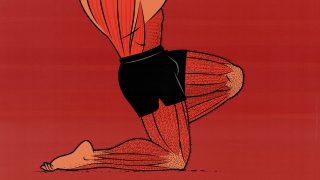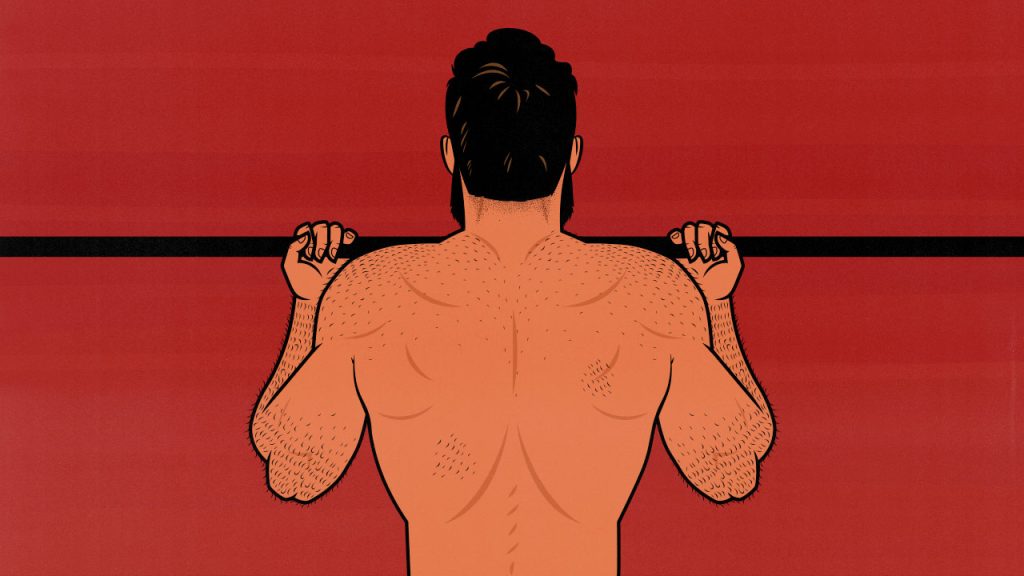
The Best Pull Day Workout for Building Muscle
Pull Days can give you a wide back, a sturdy torso, and big biceps. They’re tricky, though. You’ve got a glorious mess of muscles back there, all of them yearning to grow, but each demanding a different elbow position or pulling angle.
Then come deadlifts and bent-over rows, which work your upper back and lats, but also your spinal erectors, glutes, and hamstrings. That makes them amazing lifts for stimulating muscle growth, but they can also interfere with Leg Days.
There’s a system for programming Pull Days. It’s not as simple as our systems for Push Days and Leg Days, but we’ll give you plenty of examples, along with some workout routines you can choose from.
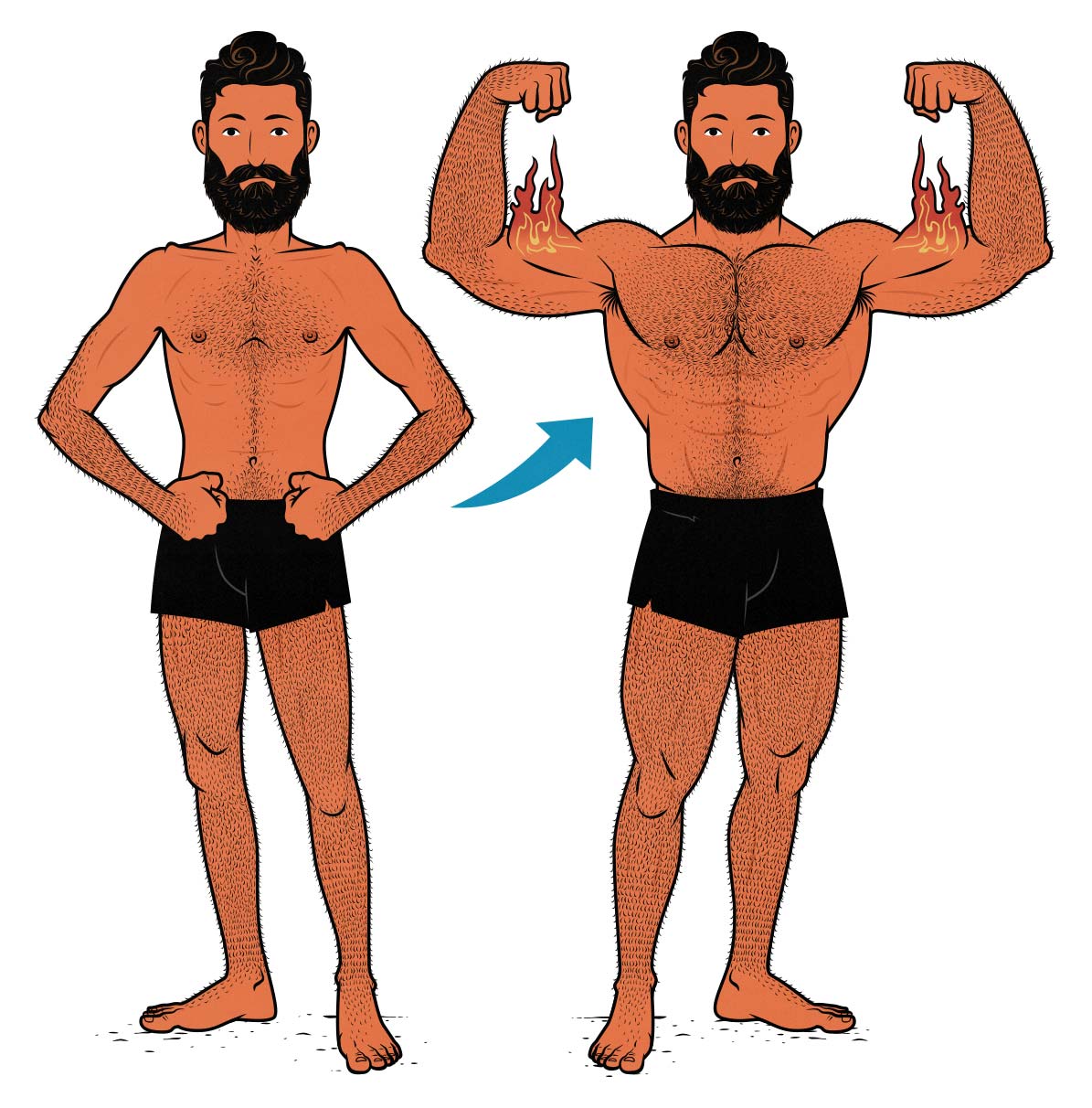
What’s A Pull Day?
Pull Day workouts focus on the pulling movement pattern. Think of pulling exercises like deadlifts, pull-ups, and rows, along with isolation exercises like biceps curls, pullovers, and reverse flyes.
Pull Days are similar to Back Days, but Back Days are part of Bro Splits, whereas Pull Days are part of Push/Pull/Legs Splits. The main difference is that Pull Days include more biceps and forearm exercises, whereas Back Days have more deadlifts.
Here’s how to schedule them:
- Monday: Push
- Tuesday: Pull <==
- Wednesday: Legs
- Thursday: Push
- Friday: Pull <==
- Saturday: Legs
- Sunday: Rest
Muscles Worked During Pull Days
Pull Days work your back, biceps, forearms, and arms. You can do that with compound pulling exercises like chin-ups, pull-ups, and rows.
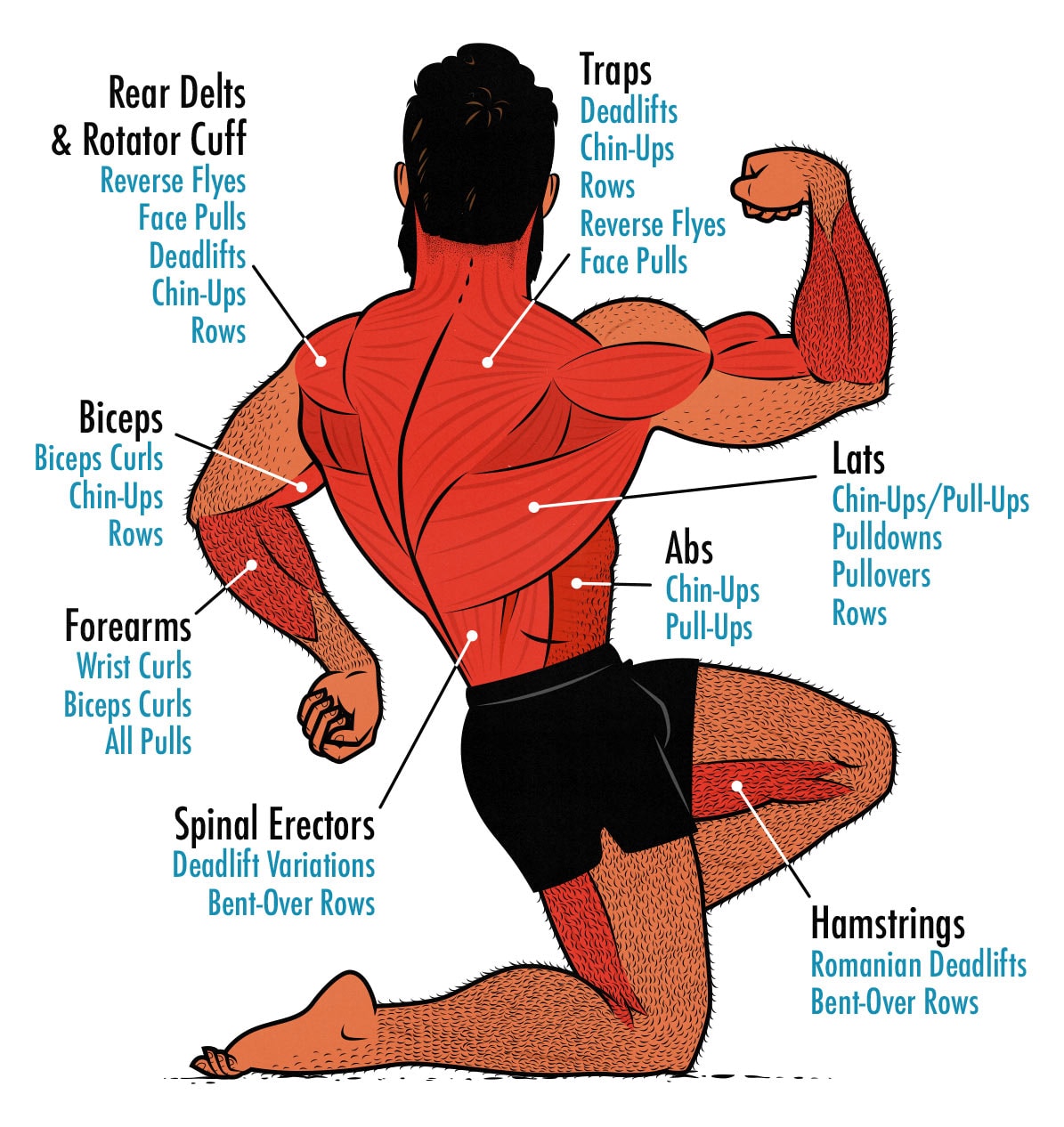
However, the big compound pulling exercises don’t do a very good job of training your biceps or forearm flexors. That’s where biceps curls and forearm curls come in.
The Best Pull Day Exercises
Back exercises are usually sorted into vertical pulls (like chin-ups) and horizontal pulls (like one-arm rows). I wish it were that simple. Chin-ups and one-arm rows both emphasize the lats and rotator cuff. They’re more similar than they are different. We need a wider variety of exercises.
It can help to think of training different functions, such as shoulder extension (chin-ups), adduction (pull-ups), external rotation (face pulls), and retraction (deadlifts). Then you need to think of your spinal erectors (deadlifts), abs (chin-ups), elbow flexors (biceps curls), and wrist flexors (forearm curls). We break it all down in our article on back training.
If that’s giving you a meatheadache, I don’t blame you. We’ve been doing this for over a decade, and pulling exercises still stand out as being especially difficult to program. We’ll give a ton of examples below, along with some workouts you can follow.
Horizontal Pulling Exercises
Horizontal pulling exercises are similar to deadlifts, but you’re bringing your arms into the lift, working your back muscles through a larger range of motion. You also have the option of supporting your chest to prevent your spinal erectors from limiting you.
- One-arm dumbbell rows are great for beginners. They’re easy to learn, easy to do, and good for bulking up the lats, rotator cuff, and traps.
- Bent-over rows are almost like deadlifts. They work your spinal erectors and traps similarly hard, it’s just you’re pulling the weight with your arms instead of your hips. This makes them better for your biceps and forearms. You can do these with dumbbells or a barbell.
- Seated cable rows work your back muscles through a great range of motion. When you lean into the bottom of the lift, you can stretch out your spinal erectors and traps, working them through a nice range of motion. You can flare your elbows to emphasize your upper back or tuck them to emphasize your lats.
- T-Bar row machines work your upper back and lats without your spinal erectors. They’re great if your spinal erectors are already tired or sore. You can flare your elbows to emphasize your upper back or tuck them to emphasize your lats.
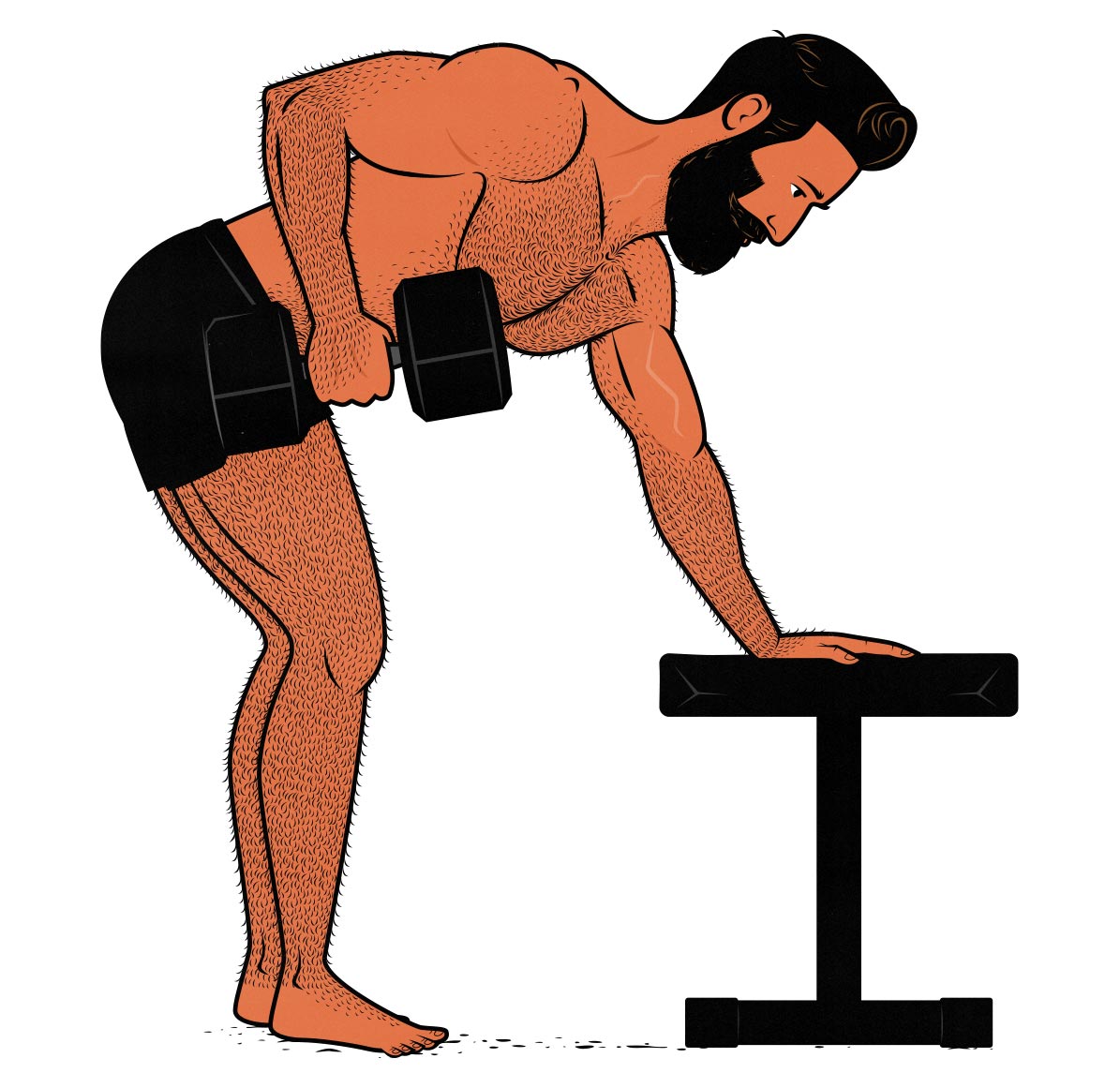
Vertical Pulling Exercises
Vertical pulling exercises are similar to rows, but you’re working your lats and rotator cuff through a much deeper range of motion, stimulating a tremendous amount of muscle growth (study).
The other difference is that instead of supporting your posture with your spinal erectors, you’re stabilizing your torso with your abs. So much so that vertical pulls are better for your abs than most ab exercises, especially if you raise your legs.
- Pulldowns are great for beginners. You can use an underhand or neutral grip, turning them into light chin-ups. You can use a wider overhand grip, turning them into light pull-ups. As a result, pulldowns are great for getting reps in.
- Chin-ups are the biggest vertical pull exercise. You can bring your biceps into the lift, allowing you to get more reps and lift more weight. You also work your lats through an enormous range of motion. And you challenge your abs.
- Pull-ups are good for your lower lats. They’re similar to chin-ups, but the extra shoulder adduction works your lower lats harder. The downside is your biceps can’t help as much.
- Pullovers challenge your lats under a deep stretch. Pullovers are one of the rare back exercises that’s the hardest at the bottom of the range of motion, where your lats are under a deep stretch. That’s fantastic for building muscle.
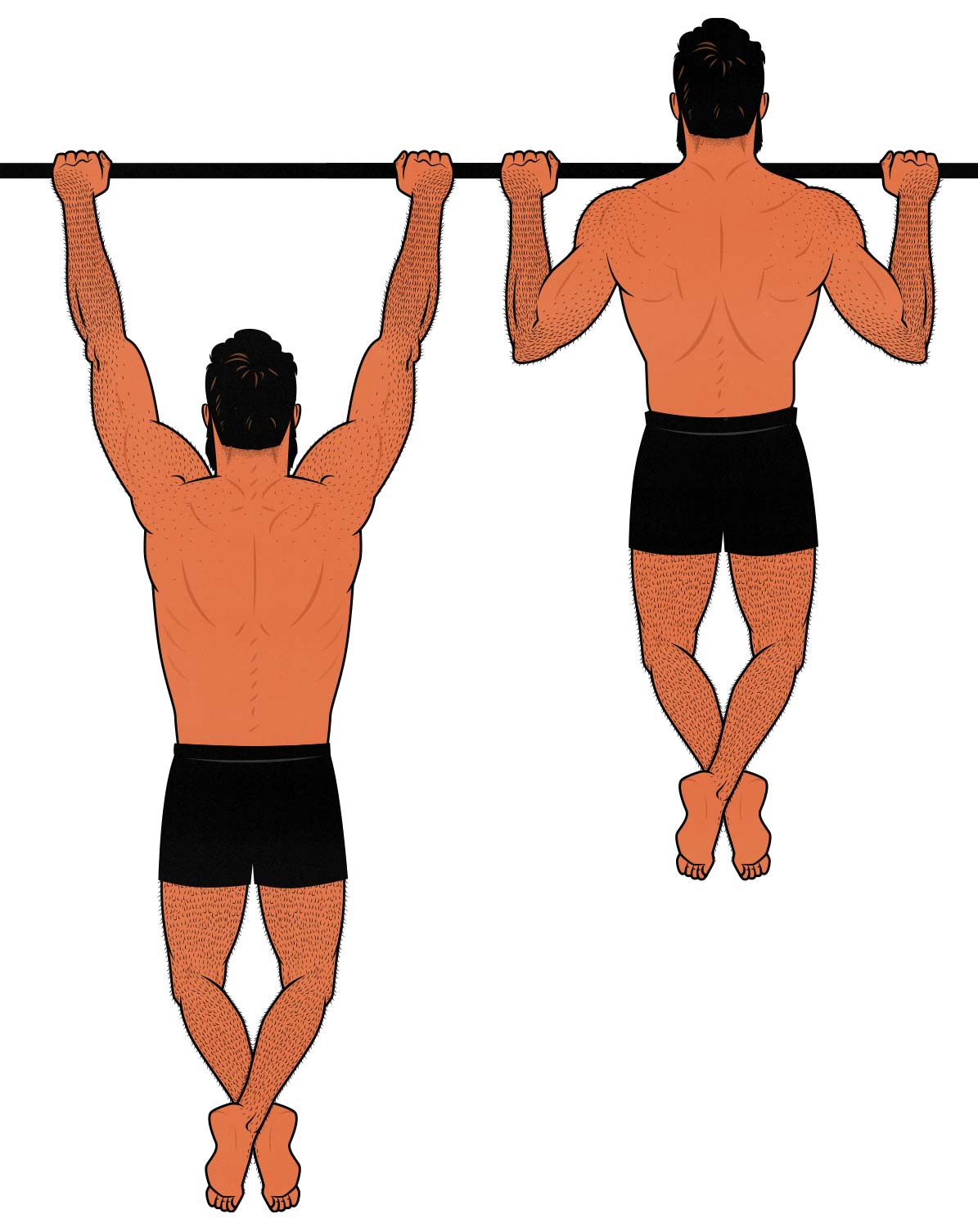
Biceps & Forearm Curls
Pulling exercises are great for your back but not your biceps. The long heads of your biceps flex your arms but also pull your elbows forward, which would interfere with pulling exercises. As a result, your biceps don’t fully engage. That’s why biceps curls are so important (study).
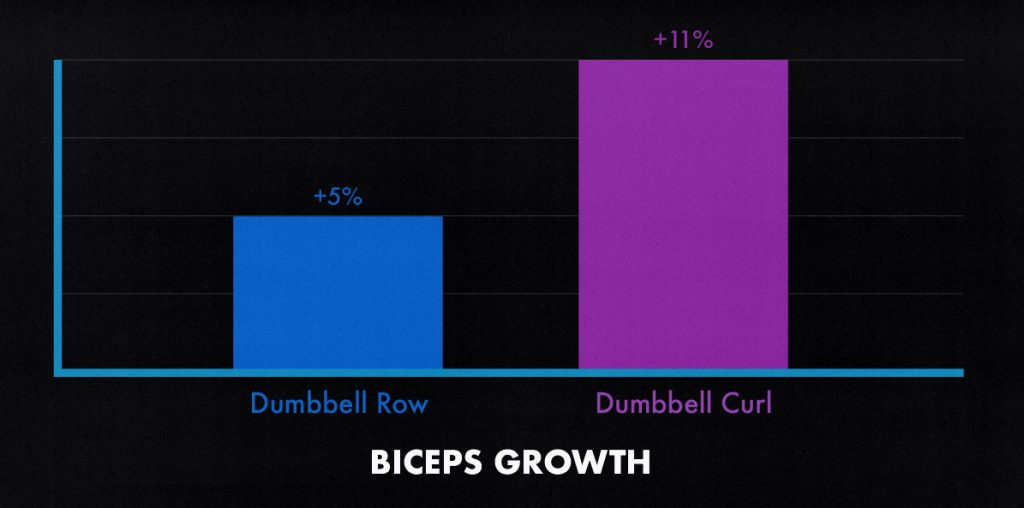
Curls can also train the big muscles on the insides and outsides of your forearms. Regular curls are fine for that, but you can do even better by adding hammer curls and wrist curls.
- Dumbbell curls are great for beginners. They’re simple to learn, easy on the elbows, and do a great job of working your biceps. Remember to keep your chest tall and proud, stretching your biceps at the shoulder joint.
- Barbell curls let you go heavier. Barbell curls are more stable than dumbbell curls, usually allowing people to lift more weight with each arm, ostensibly stimulating greater muscle growth. However, locking your hands into an underhand grip can be hard on some people’s elbows. Curl bars (aka EZ Bars) solve that problem.
- Lying biceps curls challenge your biceps through the deepest range of motion. This stimulates more muscle growth per set.
- Preacher curls have a great resistance curve. Preacher curls shorten your biceps at the shoulder joint, which isn’t great. On the other hand, they’re the hardest at the bottom of the range of motion, which is fantastic.
- Hammer curls emphasize your brachialis and brachioradialis. Your brachialis is the big muscle that sits underneath your biceps. Your brachioradialis is the beefy muscle on the outsides of your forearms.
- Cable curls allow for more grip variation. You can use a straight grip to mimic barbell curls, an angled grip to mimic curl-bar curls, or a rope grip to mimic hammer curls.
- Wrist curls work your wrist flexors. They bulk up the big muscles on the insides of your forearms. You can do them standing, but seated wrist curls will work your wrist flexors through a much deeper range of motion.
Training Volume Per Muscle
As we explained in our article on training volume, you need around 9–18 sets per muscle per week to maximize your rate of muscle growth. You also need to train each muscle at least twice per week. That gives you a target of 4–9 sets per muscle per workout. Back muscles often respond better to higher training volumes, so I’d lean toward the higher end of that range.
Fortunately, 6-day splits have two Pull Days every week. Plus, you’ll get some extra back stimulation from the deadlifts you do on Leg Day. That’s perfect for bulking up your back.
4–5 sets per pulling exercise are more than enough, especially if you’re doing deadlifts (on Leg Day), vertical pulls, and horizontal pulls. Your biceps and forearms will get some stimulation from your pulling exercises, so adding 3–4 sets of curls is usually enough.
Pull Day Workouts
Classic Pull Day Workouts (2 Per Week)
These are classic “Pull Day” workouts designed for a Push/Pull/Legs Workout Split. The first is built around a vertical pull, such as a chin-up. The second is built around a deadlift variation.
| EXERCISE | SETS | REPS |
|---|---|---|
| Chin-Ups | 4–5 sets | 6–12 reps |
| Seated Cable Rows | 4–5 sets | 8-12 reps |
| Lat Pulldowns | 4 sets | 10-15 reps |
| Low-Incline Curls | 3 sets | 10-15 reps |
| Seated Wrist Curls | 3 sets | 12–15 reps |
This first Pull workout starts with chin-ups or pull-ups. Whatever grip you choose, choose a different grip for the lat pulldowns later on. For example, if you do your chin-ups with a shoulder-width underhand grip, do your pulldowns with a wider overhand grip.
Next come seated cable rows, which bring your spinal erectors into the exercise, but not so much that they’ll be fatigued for Leg Day. If you’re doing shoulder-width underhand chin-ups and wider-grip overhand pulldowns, you could do these cable rows with a narrower neutral grip.
You’ve already trained the short heads of your biceps fairly well, so now we can emphasize the long head with some low-incline biceps curls. Those incline curls will train your wrist flexors, but we can hit them even harder with seated wrist curls.
| EXERCISE | SETS | REPS |
|---|---|---|
| Pull-Ups | 3 sets | AMRAP |
| T-Bar Machine Rows | 3 sets | 10–15 reps |
| Pullovers | 3 sets | 8–15 reps |
| Preacher Curls | 3 sets | 10-15 reps |
| Face Pulls | 3 sets | 10-15 reps |
This second workout is very similar to the first, but we’ve used different exercises that emphasize slightly different muscle fibres. This will give you a more well-rounded routine overall.
Minimalist Pull Day Workout
| EXERCISE | SETS | REPS |
|---|---|---|
| Chin-Ups | 4–5 sets | 6–12 reps |
| Seated Cable Rows | 4–5 sets | 8-12 reps |
| Dumbbell Curls | 3 sets | 10-15 reps |
One of the great advantages of training 4+ days per week is that you can do minimalist workouts. I don’t like to use minimalist routines while bulking, but I love them during periods of maintenance. I’ve used this particular workout for almost a year now, adding little variations every couple of months.
This workout combines an underhand chin-up (with tucked elbows) and a seated cable row (ideally with a wider grip). If you prefer, you could combine wider-grip pull-ups with a tucked-elbow row variation, such as one-arm dumbbell rows.
To get the most out of this routine, I recommend doing deadlifts during another workout. If you aren’t, replace the seated cable rows with Romanian deadlifts.
Maximalist Pull Day Workout
| EXERCISE | SETS | REPS |
|---|---|---|
| Chin-Ups | 4 sets | AMRAP |
| Neutral-Grip Cable Rows | 4 sets | 10–15 reps |
| Overhand Lat Pulldowns | 4 sets | 10–15 reps |
| Preacher Curls | 4 sets | 8-12 reps |
| Forearm Curls | 3 sets | 10–15 reps |
| Face Pulls | 3 sets | 10–15 reps |
This Pull Day workout has a little bit of everything. It starts with a deadlift to train your entire back, including your spinal erectors. Then it works through the various upper-back exercises one by one, giving you every pull from every angle.
This Pull workout has the highest training volume, but that doesn’t necessarily mean it’s the best. It all depends on how much volume you can benefit from and recover from. This is too much for me, but for you, it might be perfect.
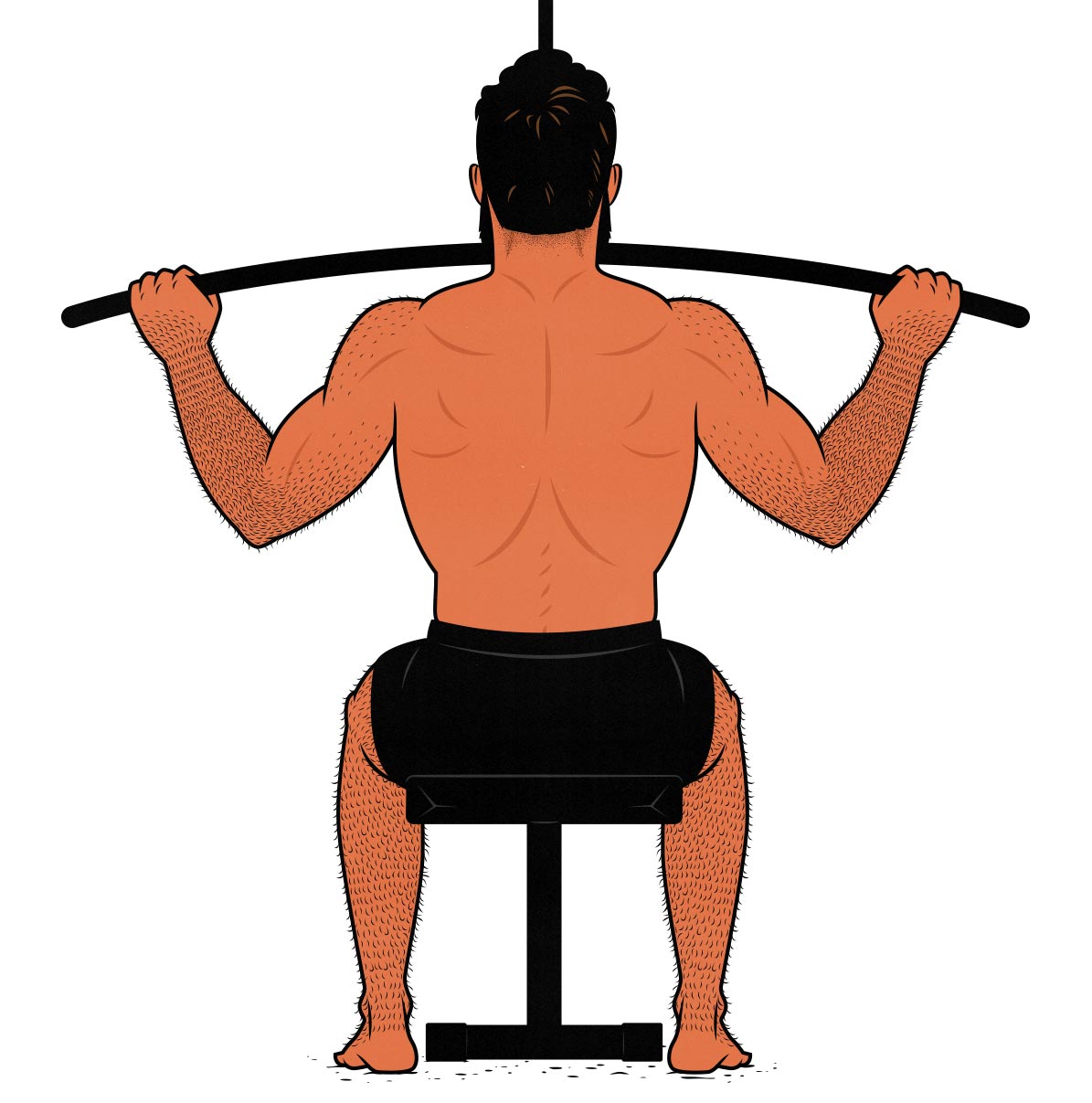
Pull Day Training Guidelines
Pull Days are part of the bodybuilding tradition. They’re designed to stimulate muscle growth, they train a single movement pattern, and they typically use relatively short rest times. Still, it’s important to focus on progressive overload. You need to make sure you’re getting stronger over time.
Here’s how to do the workout routine:
- Exercise Selection: These exercises are just defaults. Choose exercises that suit your body and your goals. If you prefer pull-ups to chin-ups, choose pull-ups.
- Volume: We have 5 exercises in our main Pull Day workout. This is probably enough to maximize your rate of muscle growth, provided you lift deep, hard, and properly. Some people benefit from more training volume than others, though, so we’ve given minimalist and maximalist routines as well.
- Progression: The goal is to get progressively stronger at the first exercise of each workout. If you hit your rep targets last workout, add a little weight. If you’re still trying to add more reps, try to get more total reps than last time. For example, if you got 12, 11, 10, and 8 reps (41 reps) last workout, try to get 42+ reps this workout.
- Rest times: Rest for 3 minutes between sets on the first exercise, 2 minutes for your other compound exercises, and 1 minute for isolation exercises.
- Reps in Reserve: Back muscles demand extra effort, and it’s usually safe to satisfy them. Failing a lat pulldown is just lifting with a humbler range of motion. It’s nothing to be afraid of. I like to take most back exercises all the way to failure.
- Muscle-Building Diet: You need enough food to fuel muscle growth. If you’re skinny-fat or overweight, you can get extra energy from your body fat. If you’re thin or lean, you’ll need to get that energy from your food—you’ll need to gain weight.
Conclusion
Alright, that’s it for now. If Pull Days still seem complicated, keep your chin up. With a little practice, you’ll get the hang of it.
If you have any questions, drop them below. I’ll answer all the comments. If you want the latest research and methods in your inbox, we have a free muscle-building newsletter.



